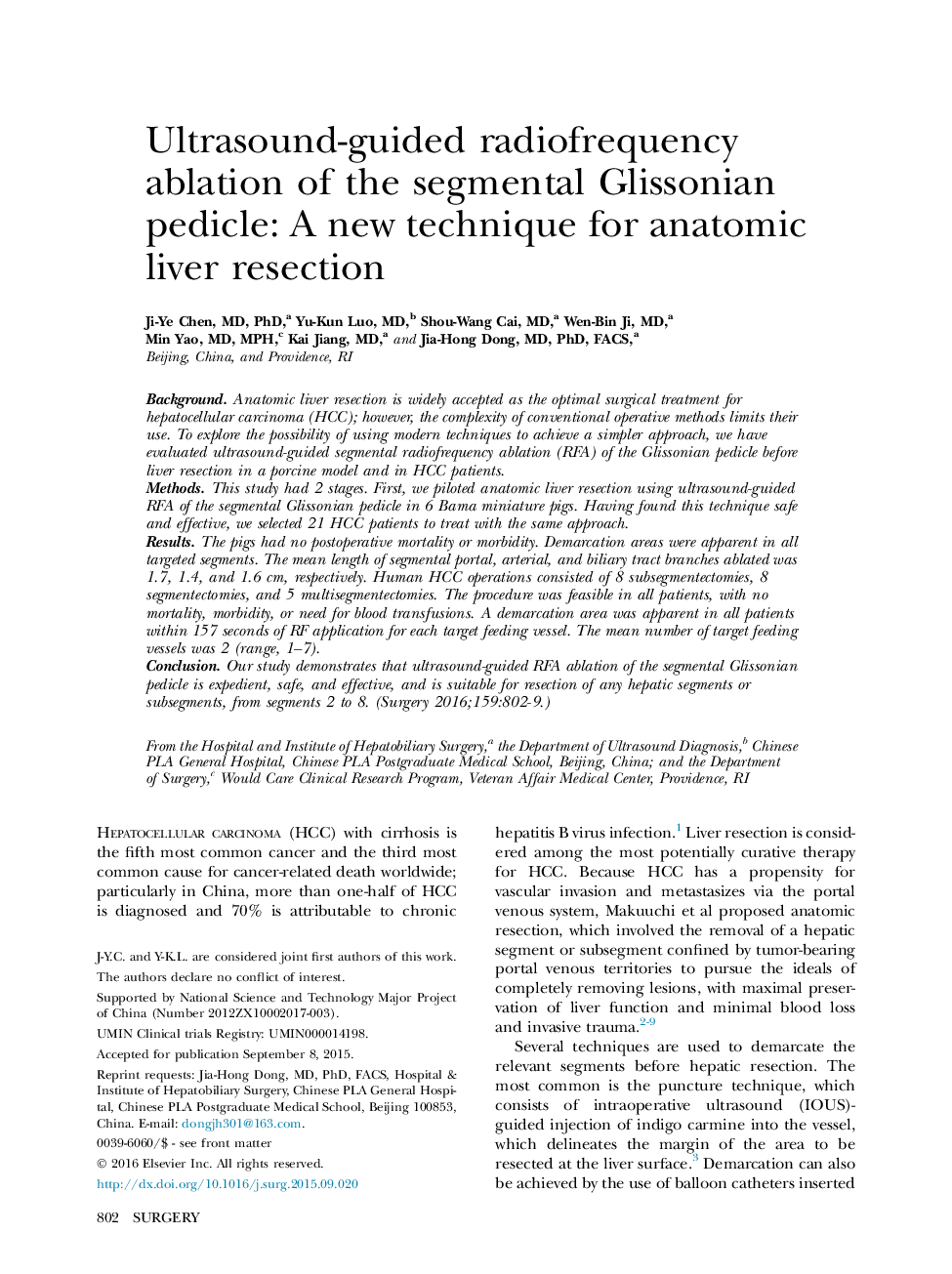| Article ID | Journal | Published Year | Pages | File Type |
|---|---|---|---|---|
| 4306811 | Surgery | 2016 | 8 Pages |
BackgroundAnatomic liver resection is widely accepted as the optimal surgical treatment for hepatocellular carcinoma (HCC); however, the complexity of conventional operative methods limits their use. To explore the possibility of using modern techniques to achieve a simpler approach, we have evaluated ultrasound-guided segmental radiofrequency ablation (RFA) of the Glissonian pedicle before liver resection in a porcine model and in HCC patients.MethodsThis study had 2 stages. First, we piloted anatomic liver resection using ultrasound-guided RFA of the segmental Glissonian pedicle in 6 Bama miniature pigs. Having found this technique safe and effective, we selected 21 HCC patients to treat with the same approach.ResultsThe pigs had no postoperative mortality or morbidity. Demarcation areas were apparent in all targeted segments. The mean length of segmental portal, arterial, and biliary tract branches ablated was 1.7, 1.4, and 1.6 cm, respectively. Human HCC operations consisted of 8 subsegmentectomies, 8 segmentectomies, and 5 multisegmentectomies. The procedure was feasible in all patients, with no mortality, morbidity, or need for blood transfusions. A demarcation area was apparent in all patients within 157 seconds of RF application for each target feeding vessel. The mean number of target feeding vessels was 2 (range, 1–7).ConclusionOur study demonstrates that ultrasound-guided RFA ablation of the segmental Glissonian pedicle is expedient, safe, and effective, and is suitable for resection of any hepatic segments or subsegments, from segments 2 to 8.
